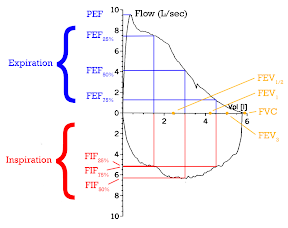Lung function decreases and AHR increases with greater sgE levels or SPT wheal diameter to inhalant allergens
 Studies in children show specific serum IgE (sIgE) and size of skin test wheal to inhalant allergens predict wheezing and reduced lung function. Few studies in adults have investigated that link.
Studies in children show specific serum IgE (sIgE) and size of skin test wheal to inhalant allergens predict wheezing and reduced lung function. Few studies in adults have investigated that link.FEV1 and FVC (% predicted) were measured using spirometry and airway responsiveness by methacholine challenge (5-breath dosimeter protocol) in 1,000 UK adults (controls and 183 patients with asthma).
Atopic status was assessed by skin prick tests (SPT) and sIgE to common inhalant allergens. Sensitization was defined using standard definitions for sIgE>0.35kUa/l and SPT 3mm>negative control.
16% of subjects showed evidence of airway hyperresponsiveness (AHR).
Increasing levels of sIgE to dust mite, cat and dog were associated with lower FEV1.
Similar findings were observed when using the size of wheal on skin testing, with decreasing lung function with increasing skin test size (dust mite, cat, dog, grass).
Lung function decreased and AHR increased with increasing sgE levels or SPT wheal diameter to inhalant allergens. Atopy influences lung function and AHR.
References:
Quantification of atopy, lung function and airway hypersensitivity in adults. Susana Marinho, Angela Simpson, Paul Marsden, Jacky A Smith and Adnan Custovic. Clinical and Translational Allergy 2011, 1:16.
Image source: Spirometry, from Wikipedia, the free encyclopedia, GNU Free Documentation License.
Related: